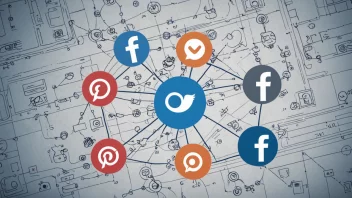Introduction
Wearable technology has rapidly evolved from basic fitness trackers to sophisticated devices that can monitor health, enhance productivity, and even connect us to the Internet of Things (IoT). Engineering plays a pivotal role in this evolution, driving innovations that make these devices more efficient, user-friendly, and impactful. In this article, we will explore the top five engineering innovations that are shaping the future of wearable technology.
1. Advanced Sensors
Integration of Multi-Functional Sensors
Modern wearables now come equipped with advanced sensors that can monitor a variety of health metrics, such as heart rate, blood oxygen levels, and even stress levels. These sensors utilize engineering principles to enhance accuracy and minimize power consumption, leading to longer battery life and more reliable data.
2. Flexible Displays
Revolutionizing User Interfaces
Flexible display technology allows wearables to be more comfortable and aesthetically pleasing. Engineers have developed screens that can bend and conform to the shape of the human body, making devices like smartwatches and fitness bands more versatile. This innovation not only improves design but also enhances functionality, allowing for larger screens without compromising portability.
3. Energy Harvesting Techniques
Sustainable Power Solutions
Wearable devices often face battery life limitations. Engineers are now exploring energy harvesting techniques, such as solar power and kinetic energy conversion, to provide sustainable power sources. This means that devices can be charged through everyday activities, reducing the need for traditional charging methods and making wearables more eco-friendly.
4. Miniaturization of Components
Compact and Efficient Designs
As technology advances, the ability to miniaturize components has become a game-changer for wearable devices. Engineers are creating smaller, lighter components that do not compromise performance. This miniaturization allows for sleeker designs and more comfortable wear, making it easier for users to incorporate these devices into their daily lives.
5. Enhanced Connectivity
Seamless Integration with Other Devices
Wearable technology now boasts improved connectivity options, such as Bluetooth, Wi-Fi, and even 5G capabilities. This engineering advancement allows wearables to communicate seamlessly with smartphones, smart home devices, and other wearables, creating a more integrated and efficient user experience. Enhanced connectivity also opens the door for real-time data sharing and analysis, which is crucial for health monitoring and fitness tracking.
Conclusion
Engineering continues to drive the development of wearable technology, making it more efficient, user-friendly, and impactful. From advanced sensors to enhanced connectivity, these innovations are transforming how we interact with technology and monitor our health. As we move forward, it will be exciting to see how engineering will further shape the future of wearables, making them an indispensable part of our lives.






